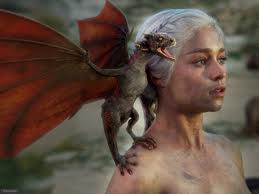76 posts
• Page 3 of 4 • 1, 2, 3, 4
Physics?
-

TIhIsmc L Griot - Posts: 3405
- Joined: Fri Aug 03, 2007 6:59 pm
you know what else used havok soul calibur 4 people in there reacted well to being hit so im not worried
i never played soul calibur so i have im guessing that its a good thing?
-

gandalf - Posts: 3400
- Joined: Wed Feb 21, 2007 6:57 pm
i never played soul calibur so i have im guessing that its a good thing?
well they reacted well to being hit even if at times it was slightly exaggerated but its been many years since then so the techs prolly alot better
-

Big Homie - Posts: 3479
- Joined: Sun Sep 16, 2007 3:31 pm
well they reacted well to being hit even if at times it was slightly exaggerated but its been many years since then so the techs prolly alot better
kk
-

Killah Bee - Posts: 3484
- Joined: Sat Oct 06, 2007 12:23 pm
well they reacted well to being hit even if at times it was slightly exaggerated but its been many years since then so the techs prolly alot better
It's not the tech. It's how the designers implement it.
-

vicki kitterman - Posts: 3494
- Joined: Mon Aug 07, 2006 11:58 am
but then again, there is such thing as upgrades, which makes things more simpler, or add stuff, which makes the tech better
-

krystal sowten - Posts: 3367
- Joined: Fri Mar 09, 2007 6:25 pm
http://uk.pc.ign.com/articles/115/1158651p1.html
...we still use some middleware that we like, such as Havok. We're not just using their physics this time, but their animation system, Havok Behavior.
So, new from scratch physics engine? PhysX?
...we still use some middleware that we like, such as Havok. We're not just using their physics this time, but their animation system, Havok Behavior.
So, new from scratch physics engine? PhysX?
-

Michelle davies - Posts: 3509
- Joined: Wed Sep 27, 2006 3:59 am
http://uk.pc.ign.com/articles/115/1158651p1.html
...we still use some middleware that we like, such as Havok. We're not just using their physics this time, but their animation system, Havok Behavior.
So, new from scratch physics engine? PhysX?
...we still use some middleware that we like, such as Havok. We're not just using their physics this time, but their animation system, Havok Behavior.
So, new from scratch physics engine? PhysX?
I suggest you reread that.
-

Lifee Mccaslin - Posts: 3369
- Joined: Fri Jun 01, 2007 1:03 am
Son, are you high?
No. My standards are not that high though. I'd do things like (under a different save) spawn hundreds and hundreds of watermelons to see them roll around and pile up. The physics were totally new to me when the game launched. Sure there were random bugs, but overall I was extremely impressed. I think the worst bug I saw was I entered a bar in Anvil and a guy screamed and smashed off the walls of the room several times, knocking everything all over the place, and died. I reloaded the save and he survived (and didn't go flying at all).
I'm not saying the physics were perfect, but when games tended to have very limited physics with most decorative objects glued to wherever they were placed, I found Oblivion to be mind blowing. Perfect? No, but certainly not bad.
I grew up in the 80s and 90s, so it doesn't take much to impress me for graphics. I find the increase in graphics over my lifetime, literally an exponential increase, to be fascinating.
If you meant my confusion, obviously I'm not the only one who read that wrong. Yeah in hindsight it means it has both Havok physics and animation, but obviously a non-trivial amount of people read it wrong the first time.
-

Tyler F - Posts: 3420
- Joined: Mon Aug 27, 2007 8:07 pm
I suggest you reread that.
Ups, my bad
I hope they use the latest version of Havok, plus they tweak it nicely in order to be much better than Oblivion...
-

Charlotte Buckley - Posts: 3532
- Joined: Fri Oct 27, 2006 11:29 am
All right I stand corrected. I would still like to see it though, like a mythbusters thing. 
One thing I dont get though is that in oblivion the only time i saw people 'flying' back was with the last arrow that killed them and it was a magic arrow. The same thing happened with a magic melee weapon. Normal arrows never flung anyone back as far as I remember. Could be wrong though.
One thing I dont get though is that in oblivion the only time i saw people 'flying' back was with the last arrow that killed them and it was a magic arrow. The same thing happened with a magic melee weapon. Normal arrows never flung anyone back as far as I remember. Could be wrong though.
-

Laura Cartwright - Posts: 3483
- Joined: Mon Sep 25, 2006 6:12 pm
I hope they use the latest version of Havok, plus they tweak it nicely in order to be much better than Oblivion...
?
Version 1.0 of the Havok SDK was unveiled at the Game Developers Conference (GDC) in 2000. The current release, Havok Version 7.1, released in December 2009, is known to work on Microsoft Windows, Xbox and Xbox 360; Nintendo's GameCube and Wii; Sony's PlayStation 2, PlayStation 3, and PlayStation Portable; Linux; and on Mac OS X.
?
http://en.wikipedia.org/wiki/Havok_(software)
-

Assumptah George - Posts: 3373
- Joined: Wed Sep 13, 2006 9:43 am
http://uk.pc.ign.com/articles/115/1158651p1.html
...we still use some middleware that we like, such as Havok. We're not just using their physics this time, but their animation system, Havok Behavior.
So, new from scratch physics engine? PhysX?
...we still use some middleware that we like, such as Havok. We're not just using their physics this time, but their animation system, Havok Behavior.
So, new from scratch physics engine? PhysX?
broski, if you play HoN, you have to tell me your username
-

sharon - Posts: 3449
- Joined: Wed Nov 22, 2006 4:59 am
well im glad now if you walk into someones house and tapdance on there table, they wont stand there and wacth
Me too.... I did that alot...
-

Ilona Neumann - Posts: 3308
- Joined: Sat Aug 19, 2006 3:30 am
I wish it will be at last similar to this
Physical Throwable Chests and Crates: Gold Edition
http://www.youtube.com/watch?v=R73n6Huu7fg
http://www.youtube.com/watch?v=6ZBRDT0f-gI
http://www.tesnexus.com/downloads/file.php?id=33404
Along with support of NPC reaction on player actions
Put it in its Place - Enhanced Grabbing
http://tesnexus.com/downloads/file.php?id=19847
Look at video tab thats mod really awesome
If modders done thats for five year old game with mesh edits and scripting, how well thats can be done by Devs thats have more assess to engine and AI logic,
with new technologies from Havok and Improved RAI?
Physical Throwable Chests and Crates: Gold Edition
http://www.youtube.com/watch?v=R73n6Huu7fg
http://www.youtube.com/watch?v=6ZBRDT0f-gI
http://www.tesnexus.com/downloads/file.php?id=33404
Along with support of NPC reaction on player actions
Put it in its Place - Enhanced Grabbing
http://tesnexus.com/downloads/file.php?id=19847
Look at video tab thats mod really awesome
If modders done thats for five year old game with mesh edits and scripting, how well thats can be done by Devs thats have more assess to engine and AI logic,
with new technologies from Havok and Improved RAI?
-

Quick Draw - Posts: 3423
- Joined: Sun Sep 30, 2007 4:56 am
All right I stand corrected. I would still like to see it though, like a mythbusters thing. 
One thing I dont get though is that in oblivion the only time i saw people 'flying' back was with the last arrow that killed them and it was a magic arrow. The same thing happened with a magic melee weapon. Normal arrows never flung anyone back as far as I remember. Could be wrong though.
One thing I dont get though is that in oblivion the only time i saw people 'flying' back was with the last arrow that killed them and it was a magic arrow. The same thing happened with a magic melee weapon. Normal arrows never flung anyone back as far as I remember. Could be wrong though.
Goblins would fly backwards from a plain arrow hit, and smash up against the far wall, but it was always from the hit that killed them. I've also seen one sail completely across the room after being stabbed with a rusty iron dagger, and I can't count how many of them went airborne after a weak Flare spell.
It always annoyed me how the books on the counter in Slash and Smash would fall over every time I entered the shop, and always reset back into place by the next visit, just to fall over again. The worst instance I recall was when an NPC nudged a table in passing in one of the wealthier houses, and almost everything on the table launched itself in a giant chain reaction. Most of the items crashed into the walls, bouncing back and forth between the wall and table before landing all over the room.
The mere fact that it HAD physics was pretty amazing, but it desperately needed a bit of adjusting before it was ready for release, and didn't get it.
-

Juan Suarez - Posts: 3395
- Joined: Sun Nov 25, 2007 4:09 am
Warning - This post is full of boring physiology and physics stuff!
I'm fairly sure sure my level of knowledge is pretty good since I'm a teacher of historical fighting and do in-depth research on ancient warfare as part of writing RPGs and historical supplements. But I might just be a gifted amateur, who knows?
However, prompted by what you posted above I'll try to illustrate a few base concepts to help clear any misconceptions some people might have.
First off lets see how much Kinetic Energy is contained in some different types of weapons. I'll give the measurements in foot-pounds for the sake of American readers, but all you really need to worry about are the relative ratios.
Hunting rifle round - about 2,700
.357 Magnum handgun - about 580
Spear - 150ish (varies greatly depending on its weight)
Medieval War Arrow - roughly 100
Modern Arrow - about 60
The value for the historical arrow is an estimation since there are few intact finds of whole Medieval arrows, so the weight of the shaft is an approximation. Since warbows don't launch arrows any faster, merely allow heavier arrows to be shot, it is a fair extrapolation. Near double the weight of the arrow results in the same proportional increase in launch energy.
Now the first thing to notice is that modern projectiles from firearms have a far, far higher kinetic energy. As we can see a historical arrow (at point blank range) has about a fifth of the force of a powerful handgun bullet or nearly a thirtieth of a rifle round. Now Newton's third law in layman's terms says that every action has an equal an opposite reaction. So since firing a hunting rifle doesn't hurl you backwards, neither can its projectile do the same to the target. If a shooter stumbles its because they were firing from an unbalanced position. Likewise when the target is hit, they will likely not fall over unless they too were caught off-balance - in fact less so because the projectile would have lost a large proportion of its KE by the time it strikes. So if a rifle round cannot forcibly throw a human a single metre, there is little hope of a war arrow doing the same.
The second thing to be aware of is more technical in nature. The velocity of the projectile when it hits influences the impulse resistance of the material it strikes - i.e. the faster the projectile travels the greater the force the flesh will generate to initially slow it. Its the effect you experience when entering water; for example lowering yourself into a swimming pool is almost resistance-free, but diving into the same pool is harder because the fluid material has less time to flow out of the way. Animal tissue is the same. More interestingly the impulse resistance grows exponentially with the velocity of the projectile. Thus being shot with a bullet means your body will act more like a solid wall than if you're shot by an arrow.
That last point is important because when you say above Armour piercing arrows that punch through Plate armour would have had tremendous power its that 'punching through' bit which produces a tremendous reduction in knock-back. Arrows have excellent penetration characteristics due to their tiny cross-section profile, (relatively) heavy weight and low velocity. In effect they go deeper because they decelerate slower. Thus because energy is transferred over a longer period of time, they will inflict even less of a knock-back.
Now I'm not saying a human can't be knocked over. Any significant force applied to an extremity can apply leverage to cause loss of balance, especially on a bipedal. Being shot in the head is a classic example because almost all the force of the projectile goes into rocking the head only, and where the head tips the rest of the body tends to follow - i.e. it overbalances and falls down. Another is to be shot from the side when running in mid-step. But they are not thrown forcibly off their feet. That is a physical impossibility with the human powered weapons we are talking about.
For more visceral proof you could search the net for video clips of actual bow hunts against live deer and boars. You'll see arrows bed deep in the animal, which usually springs away in panic and pain, but is not knocked over by the impact. In fact hitting them with arrows from 160lb bows would be more likely to cause the arrow to punch completely through the body and transfer even less momentum to the animal.
I'm fairly sure sure my level of knowledge is pretty good since I'm a teacher of historical fighting and do in-depth research on ancient warfare as part of writing RPGs and historical supplements. But I might just be a gifted amateur, who knows?
However, prompted by what you posted above I'll try to illustrate a few base concepts to help clear any misconceptions some people might have.
First off lets see how much Kinetic Energy is contained in some different types of weapons. I'll give the measurements in foot-pounds for the sake of American readers, but all you really need to worry about are the relative ratios.
Hunting rifle round - about 2,700
.357 Magnum handgun - about 580
Spear - 150ish (varies greatly depending on its weight)
Medieval War Arrow - roughly 100
Modern Arrow - about 60
The value for the historical arrow is an estimation since there are few intact finds of whole Medieval arrows, so the weight of the shaft is an approximation. Since warbows don't launch arrows any faster, merely allow heavier arrows to be shot, it is a fair extrapolation. Near double the weight of the arrow results in the same proportional increase in launch energy.
Now the first thing to notice is that modern projectiles from firearms have a far, far higher kinetic energy. As we can see a historical arrow (at point blank range) has about a fifth of the force of a powerful handgun bullet or nearly a thirtieth of a rifle round. Now Newton's third law in layman's terms says that every action has an equal an opposite reaction. So since firing a hunting rifle doesn't hurl you backwards, neither can its projectile do the same to the target. If a shooter stumbles its because they were firing from an unbalanced position. Likewise when the target is hit, they will likely not fall over unless they too were caught off-balance - in fact less so because the projectile would have lost a large proportion of its KE by the time it strikes. So if a rifle round cannot forcibly throw a human a single metre, there is little hope of a war arrow doing the same.
The second thing to be aware of is more technical in nature. The velocity of the projectile when it hits influences the impulse resistance of the material it strikes - i.e. the faster the projectile travels the greater the force the flesh will generate to initially slow it. Its the effect you experience when entering water; for example lowering yourself into a swimming pool is almost resistance-free, but diving into the same pool is harder because the fluid material has less time to flow out of the way. Animal tissue is the same. More interestingly the impulse resistance grows exponentially with the velocity of the projectile. Thus being shot with a bullet means your body will act more like a solid wall than if you're shot by an arrow.
That last point is important because when you say above Armour piercing arrows that punch through Plate armour would have had tremendous power its that 'punching through' bit which produces a tremendous reduction in knock-back. Arrows have excellent penetration characteristics due to their tiny cross-section profile, (relatively) heavy weight and low velocity. In effect they go deeper because they decelerate slower. Thus because energy is transferred over a longer period of time, they will inflict even less of a knock-back.
Now I'm not saying a human can't be knocked over. Any significant force applied to an extremity can apply leverage to cause loss of balance, especially on a bipedal. Being shot in the head is a classic example because almost all the force of the projectile goes into rocking the head only, and where the head tips the rest of the body tends to follow - i.e. it overbalances and falls down. Another is to be shot from the side when running in mid-step. But they are not thrown forcibly off their feet. That is a physical impossibility with the human powered weapons we are talking about.
For more visceral proof you could search the net for video clips of actual bow hunts against live deer and boars. You'll see arrows bed deep in the animal, which usually springs away in panic and pain, but is not knocked over by the impact. In fact hitting them with arrows from 160lb bows would be more likely to cause the arrow to punch completely through the body and transfer even less momentum to the animal.
Your reading skill has been improved
-

Killer McCracken - Posts: 3456
- Joined: Wed Feb 14, 2007 9:57 pm
I would still like to see it though, like a mythbusters thing. 
I agree with you here. I would love to see something like that.
One thing I dont get though is that in oblivion the only time i saw people 'flying' back was with the last arrow that killed them and it was a magic arrow. The same thing happened with a magic melee weapon. Normal arrows never flung anyone back as far as I remember. Could be wrong though.
Like Kovacius said, lesser enemies would indeed often go flying from regular arrows. I'm really not a big fan of the word "immersion," but if there was one thing in Oblivion that "broke my immersion," it was the enemies flying around after being hit by arrows. That didn't just break my immersion, it took out behind the shed and beat it raw, then stole its lunch money, and then shot its dog for good measure. My immersion has never been the same since.
-

louise tagg - Posts: 3394
- Joined: Sun Aug 06, 2006 8:32 am
I agree with you here. I would love to see something like that. 
Like Kovacius said, lesser enemies would indeed often go flying from regular arrows. I'm really not a big fan of the word "immersion," but if there was one thing in Oblivion that "broke my immersion," it was the enemies flying around after being hit by arrows. That didn't just break my immersion, it took out behind the shed and beat it raw, then stole its lunch money, and then shot its dog for good measure. My immersion has never been the same since.
Like Kovacius said, lesser enemies would indeed often go flying from regular arrows. I'm really not a big fan of the word "immersion," but if there was one thing in Oblivion that "broke my immersion," it was the enemies flying around after being hit by arrows. That didn't just break my immersion, it took out behind the shed and beat it raw, then stole its lunch money, and then shot its dog for good measure. My immersion has never been the same since.
speaking of arrows, atleast in skyrim there will be blood when you get hit by arrows instead of nothing
:D
-

Sami Blackburn - Posts: 3306
- Joined: Tue Jun 20, 2006 7:56 am
speaking of arrows, atleast in skyrim there will be blood when you get hit by arrows instead of nothing
:D
:D
That's true! And a good thing, too.
-

Len swann - Posts: 3466
- Joined: Mon Jun 18, 2007 5:02 pm
That's true! And a good thing, too.
you remember how in oblivion, u just got down killing that argonian in the Arena, you come out with like 20 arrows all over you
and you walk done the street like nothing happened
i lol'd
-

Amie Mccubbing - Posts: 3497
- Joined: Thu Aug 31, 2006 11:33 pm
Heh. Oh, I remember many a time where I would walk around looking like a really determined pincushion. It was rather ridiculous.
-

Lucy - Posts: 3362
- Joined: Sun Sep 10, 2006 4:55 am
you know if there's gonna be a bleed effect in Skyrim?
-

Nick Tyler - Posts: 3437
- Joined: Thu Aug 30, 2007 8:57 am
Ah, do you mean like wounds that continue to do damage until you take care of them? I don't know--I'm not as up on the latest confirmed info as others might be here. If there is, I'm guessing it would be a special ability that certain weapons have, rather than universal.
-

Elea Rossi - Posts: 3554
- Joined: Tue Mar 27, 2007 1:39 am
76 posts
• Page 3 of 4 • 1, 2, 3, 4
